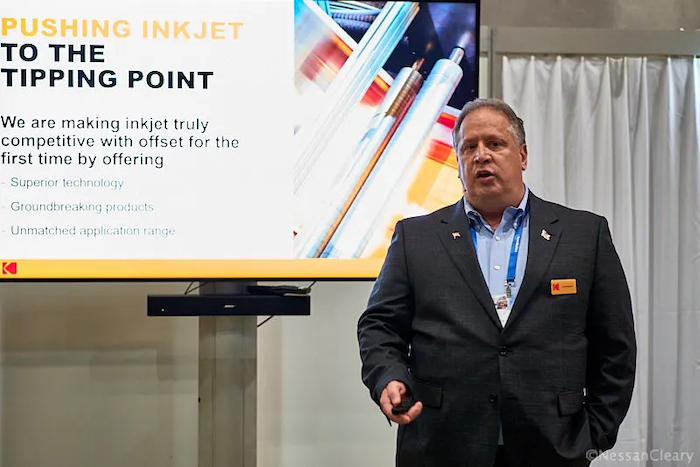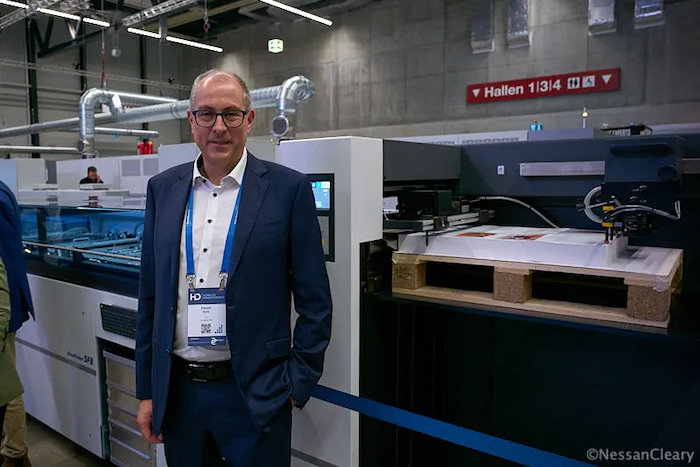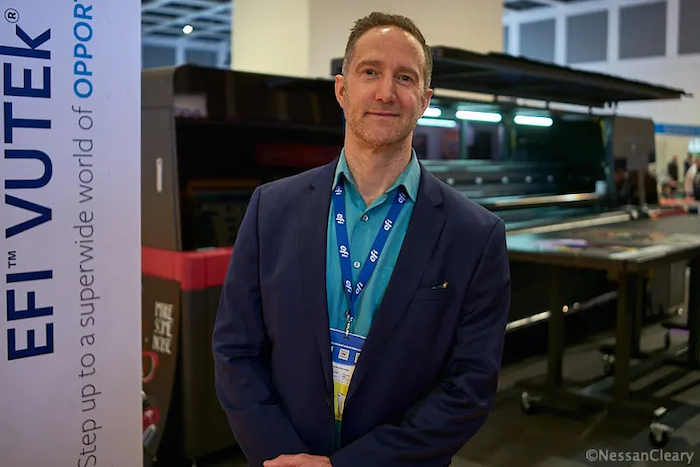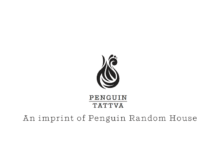The American president Donald Trump has shaken up the world’s trade by announcing sweeping tariffs that have sparked a trade war. This will affect all industries, including just about every sector of the print industry, but how is this trade war likely to play out?
One of the basic principles that underpins most human endeavours is the idea that individuals can be stronger by working together. Globalisation amplifies this by integrating ideas, values and supply chains together. This is underpinned by a complex web of trade agreements, import duties and tariffs that promote the ideal of free trade whilst smoothing out some of the inequalities.
It’s by no means a perfect system. The richer nations have arguably benefitted most from this through lower pricing, including the wealthiest, most developed nation, the USA. And yet it is America that has now upended this, with Trump falsely claiming that other nations were ripping off the American people. His proposed tariffs threaten both foreign products that are imported, such as Samsung smartphones, and American products that are outsourced, like Apple iPhones, not to mention all the myriad parts and sub-assemblies that criss-cross international borders every day. Inevitably it also affects all sectors of the print industry, from heavy metal presses through to high tech components like printheads and inks.
The tariff situation
It’s hard to keep up with the actual tariffs because Trump keeps moving the goalposts. But at the time of publishing, the US has levied a ten percent universal tariff that applies to most goods from all countries since April and will supposedly stay in place even for countries that do reach a trade deal with the US.
In addition to this, the US announced further ‘reciprocal’ tariffs, which vary from country to country. These include 20 percent for the EU, 24 percent for Japan and 26 percent for India. For now, most of these are on hold until 9th July, to allow time for trade talks. Trump has also threatened further punitive tariffs on Mexico, Canada and China, ostensibly for not doing enough to stop the supply of Fentanyl (used to produce narcotics) into the US, but these are also mostly on hold.
There was some brief relief on 28th May when a US court suspended both the Fentanyl and Reciprocal tariffs but an appeals court has left these tariffs in place pending a government appeal on 31 July. In any case, these tariffs are mostly on hold until 9th July.
Trump delivered a further shock to the global system by raising tariffs on steel and aluminium imports from an initial 25 percent to 50 percent. These latest tariffs also cover the proportion of steel or aluminium used to manufacture a range of goods. Naturally, the list of items affected also keeps changing. But from today, 23rd June, it will include many household appliances such as fridge freezers, dishwashers and cookers.

There are also separate tariffs on imports of cars and related parts of 25 percent — but with an exception for some vehicles from Mexico and Canada that are covered under the existing US Mexico Canada agreement or USMCA that Trump signed in his first term.
Trump has also threatened secondary tariffs, including 25 percent on all products from any country that imports Venezuelan oil and 25-50 percent on all products from any country that imports Iranian or Russian oil. Again, these tariffs are also suspended until 9 July, pending the outcome of trade negotiations.
The tariff threat is supposed to be about forcing through quick deals but trade negotiations are complex and full of minute details such as how to classify individual products, what extent the parts and sub-assemblies within products should also be considered and to evaluate the country of origin. The tariffs are simply complicating this and delaying the process further. And the constant changes to the rate and the dates that the tariffs will apply just encourages other countries to hold out for longer. In addition, some countries, such as Japan have elections and can’t really commit to trade deals till after those elections.
And the Americans seem blissfully unaware that complaining that some nations are difficult to deal with simply boosts those governments’ standing with their own electorate. Nonetheless, the US has now split other countries into two groups: Good Faith Negotiators, such as Canada and Japan, where there may be further deadline extensions; and Non-Cooperative Nations, such as India, which may yet face even higher tariffs.
To complicate matters, Trump does not have the freedom to manoeuvre that he claims because he is hemmed in by the reactions from various financial markets. To highlight this, the Financial Times has coined the acronym TACO – Trump Always Chickens Out – to describe Trump’s tendency to announce and then suspend the various tariffs. Trump might claim that this is a negotiating tactic but the TACO label comes from the bond markets that hold US government debt, and those markets are not swayed by ideology or personal relationships. The tariff policy has created instability, which many economists believe will result in long term costs for the US economy. That belief is expressed in rising yields for bonds, pushing up the US government debt, and forcing Trump to suspend his tariffs.
It’s a high stakes game of chicken. Trump assumes that his erratic behaviour will give him an edge in any negotiations. But unpredictability is itself relatively easy to predict and to work around. Such people are more likely to act on their own instincts rather than empirical evidence and reason, which also makes them easier to manipulate. Hence the market assumption that it will be Trump that chickens out.
Impact on printing industry
Over the last couple of months I’ve asked a number of CEOs from across the industry for their views on the tariffs. Most are opposed to this trade war saying that it will just lead to higher prices for customers, which will benefit no one. However, there is still plenty of support for the Trump administration from within America. Kodak, for example, is one of the few American companies that still manufactures the majority of its products in the US. Jim Continenza, CEO of Kodak, has long argued that tariffs can support US manufacturing, particularly around printing plates. Kodak has claimed that Chinese companies used government subsidies to produce plates in China, and accused both Chinese and Japanese competitors of dumping plates in the US at below the market value in their home markets. Continenza told me last summer that he had successfully lobbied the US government for higher tariffs around plates. Earlier this year, following Trump’s election and initial announcements on raising US tariffs, I asked Continenza if he was happy with Trump’s focus on tariffs. He told me: “All we want is a level playing field. But we need long term tariffs. Prices are not going up since the tariffs were put in place.”

However, the majority view is more closely reflected by Daniel Erni, CEO of Hunkeler, who told me back in February: “Due to the fact that the most manufacturers in the print finishing sector are not in the US, this is more likely to increase the prices for the US customers and with that we do have a risk that the whole market will slow down.”
This is backed up by research from IT Strategies that estimates the US imports around 99 percent of the digital and conventional printing equipment used in the country, as well as 99 percent of digital supplies and 80 percent of conventional supplies plus 40 percent of substrates.
Erni added: “We do have to talk about moving manufacturing to the US, and we can see that manufacturing in the US now is doable. However, we would have to realise that even if we can do that then we would have a price increase because we can’t just manufacture in small numbers.”
The situation is equally complicated for US manufacturers. Frank Pennisi, CEO of EFI, points out: “We are a global company. Around 30-40 percent of our employees are in the US, and 30-40 percent of our sales are in the US. But just because one leader says that we have to make and sell in one place, it doesn’t work like that.”
Pennisi says that EFI has been able to use its global footprint, explaining: “It’s a detailed analysis of where we make it and where we sell it. But we think we have mitigated most of it by working with our supply chain. We get components and can move around the supply chain to complete the assembly and change the country of origin. Our trade compliance people are very good and doing this right now.” He added: “We are looking to move it in Europe to our factories like Spain, Israel, Italy which is what we do already. We have many things like ink components that we take in the US that we have to shift around. Sometimes it doesn’t add to the cost because we are adding more volume to a place and so the cost goes down. So it’s not so simple.”
US economy
For now, there has been very little impact from the tariffs on the US economy, mainly because most suppliers have been working through their pre-tariff inventories. Many companies have paused their exports to the US to avoid the tariffs whilst they wait and see what the final outcome is. Inevitably many US companies will pass their costs down to customers, but some will also seek to pass costs up their supply chain, which may indirectly affect many American printers.

The US government is now starting to see some income from its universal tariff of ten percent, which has been heralded as proof of success. However, it’s worth noting that Trump imposed some steel tariffs in his first term in 2018. More recent data from the International Trade Commission found that this led to a modest increase in US steel production, but that it increased costs for cars, tools and machines, leading to a $3 billion contraction in output for those industries by 2021.
And just last week, on 18th June, the Federal reserve opted to keep US interest rates at their current level amidst worries that inflation may go up and that GDP may contract by up to 1 percent. The Federal Reserve’s latest Monetary Policy Report to Congress, released on Friday 20th June, stated: “The effects on US consumer prices of the increase in import tariffs this year are highly uncertain, as trade policy continues to evolve, and it is still early to assess how consumers and firms will respond.”
It’s also possible that the conflict in the Middle East will complicate this issue further. So stay tuned for the second half of this story in the next day or so, where I’ll look at how the American trade war affects the rest of the world in general, and printing in particular.
First published on 23rd June 2025 in the Printing and Manufacturing Journal. Republished by permission.
This article was updated on 7th July 2025


















